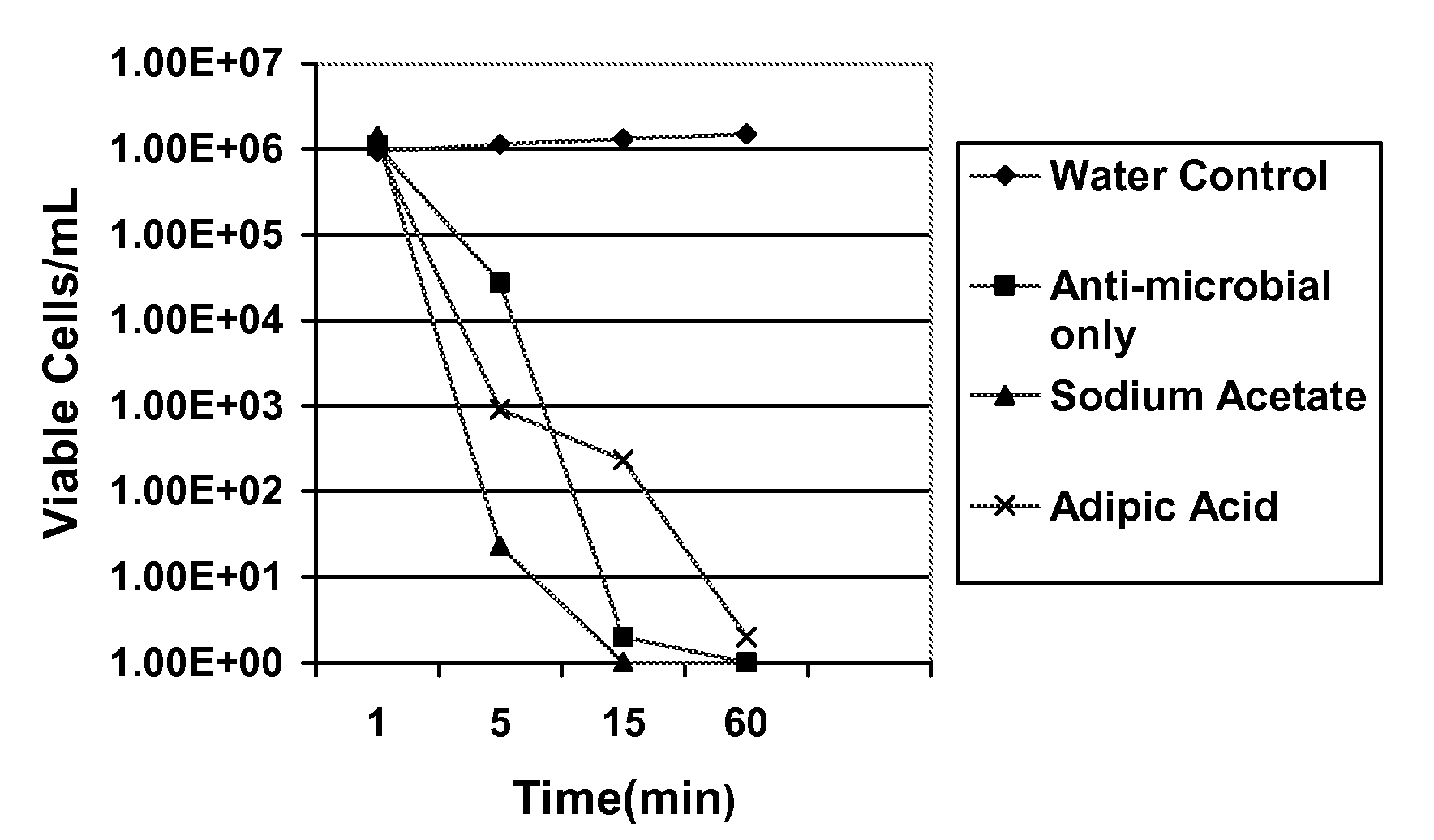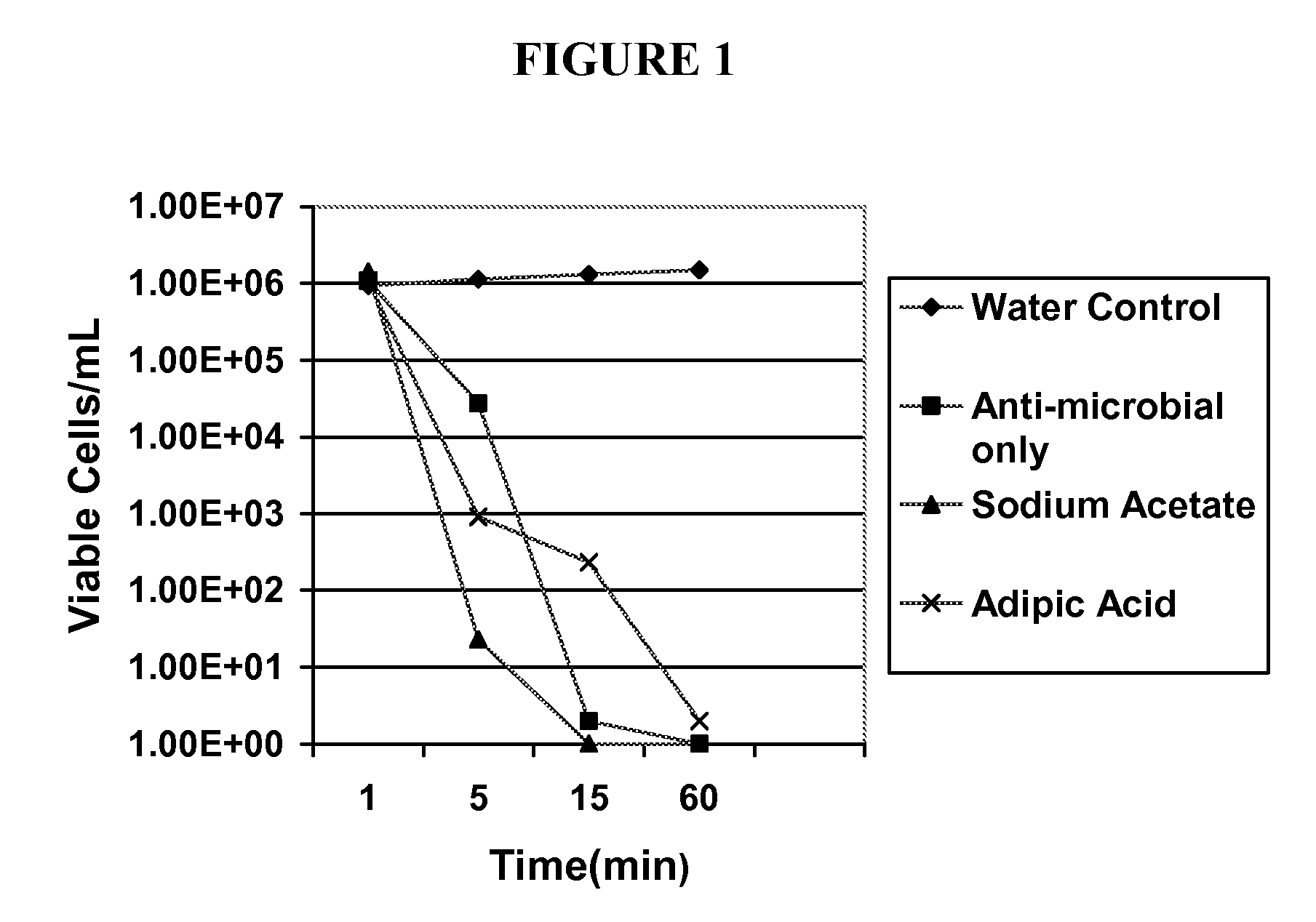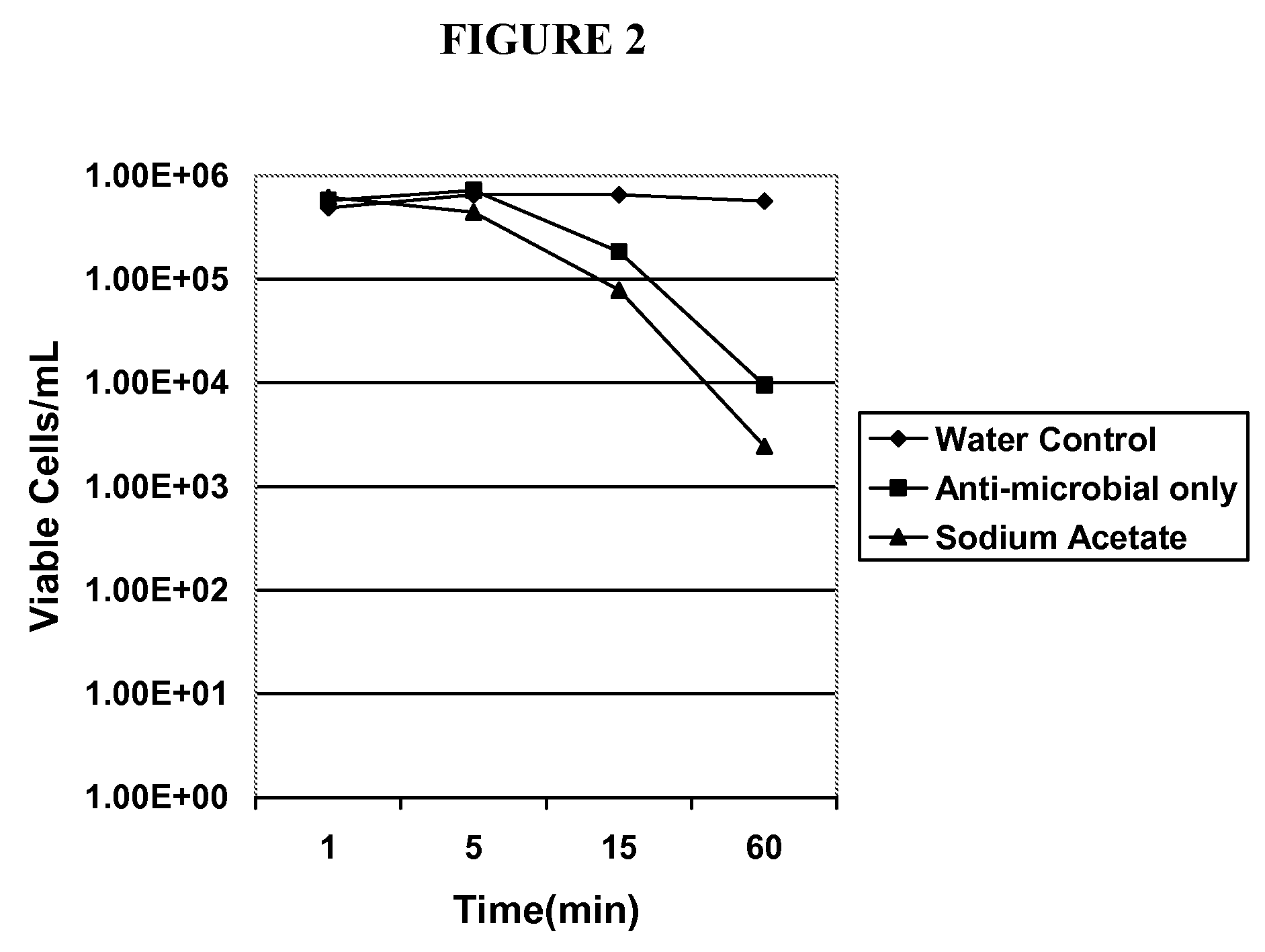Aliphatic acid-containing n-halogenated amino acid formulations
a technology of n-halogenated amino acids and aliphatic acid, which is applied in the direction of antibacterial agents, drug compositions, antiparasitic agents, etc., can solve the problems of unsatisfactory antimicrobial effect, risk that the compounds may not achieve the required level of antimicrobial effect, and no currently known efficacious treatment, so as to enhance the antimicrobial activity of n-halogenated amino acid compounds and enhance the antimicrobial activity of n-
- Summary
- Abstract
- Description
- Claims
- Application Information
AI Technical Summary
Benefits of technology
Problems solved by technology
Method used
Image
Examples
example 1
[0060]
Ingredient% w / vSodium 2,2-dimethyl-N,N-dichlorotaurine0.1Sodium Acetate Trihydrate0.07Sodium Chloride0.8Hydrochloric Acidq.s. pH 4Sodium Hydroxideq.s. pH 4Purified Waterq.s. 100%
example 2
[0061]
Ingredient% w / vSodium 2,2-dimethyl-N,N-dichlorotaurine0.1Sodium Acetate Trihydrate0.07Sodium Chloride0.8Hydrochloric Acidq.s. pH 5.5Sodium Hydroxideq.s. pH 5.5Purified Waterq.s. 100%
example 3
[0062]The antimicrobial activity of the formulations according to embodiments of the present invention were evaluated by a standard microbiological analysis. The results of this evaluation are summarized in Tables 1 and 2 below and are shown graphically in FIGS. 1 and 2. For the evaluation, bacterial and fungal isolates were grown overnight on appropriate agar media as source of fresh cells. A suspension of these fresh cells was prepared in saline at approximately 1×108 cfu / mL. These suspensions were added directly to the test agents (various solutions of sodium 2,2-dimethyl-N,N-dichlorotaurine and control solutions). The initial concentration of cells in the test agent solutions was approximately 1×106 cfu / mL. The exposure of microorganisms to the test agent was conducted at room temperature for up to 60 minutes. At selected times, an aliquot was withdrawn and diluted into phosphate buffered saline at 4° C. Viability was determined following serial dilution and filtration onto Mill...
PUM
| Property | Measurement | Unit |
|---|---|---|
| osmolality | aaaaa | aaaaa |
| osmolality | aaaaa | aaaaa |
| pH | aaaaa | aaaaa |
Abstract
Description
Claims
Application Information
 Login to View More
Login to View More - R&D
- Intellectual Property
- Life Sciences
- Materials
- Tech Scout
- Unparalleled Data Quality
- Higher Quality Content
- 60% Fewer Hallucinations
Browse by: Latest US Patents, China's latest patents, Technical Efficacy Thesaurus, Application Domain, Technology Topic, Popular Technical Reports.
© 2025 PatSnap. All rights reserved.Legal|Privacy policy|Modern Slavery Act Transparency Statement|Sitemap|About US| Contact US: help@patsnap.com



